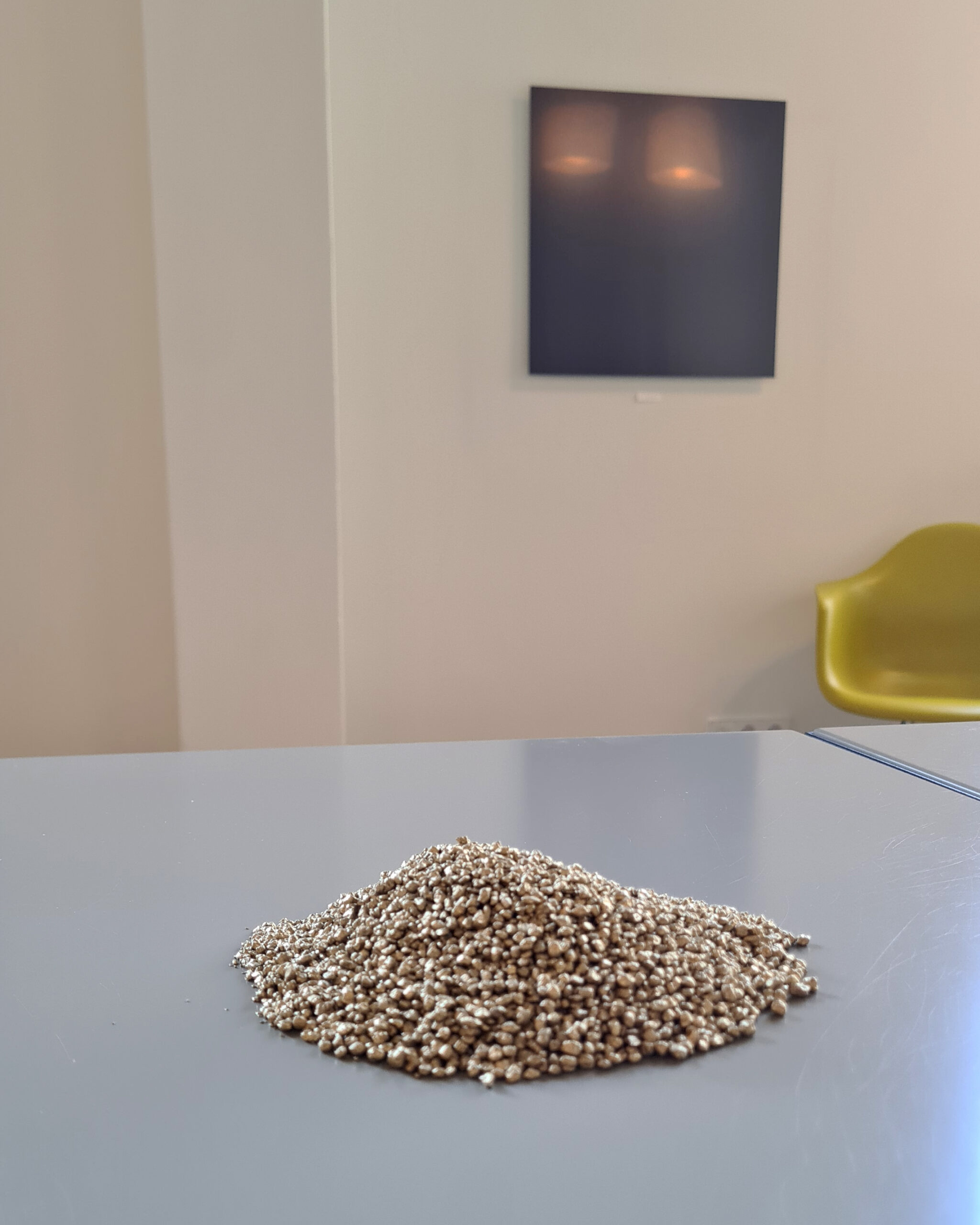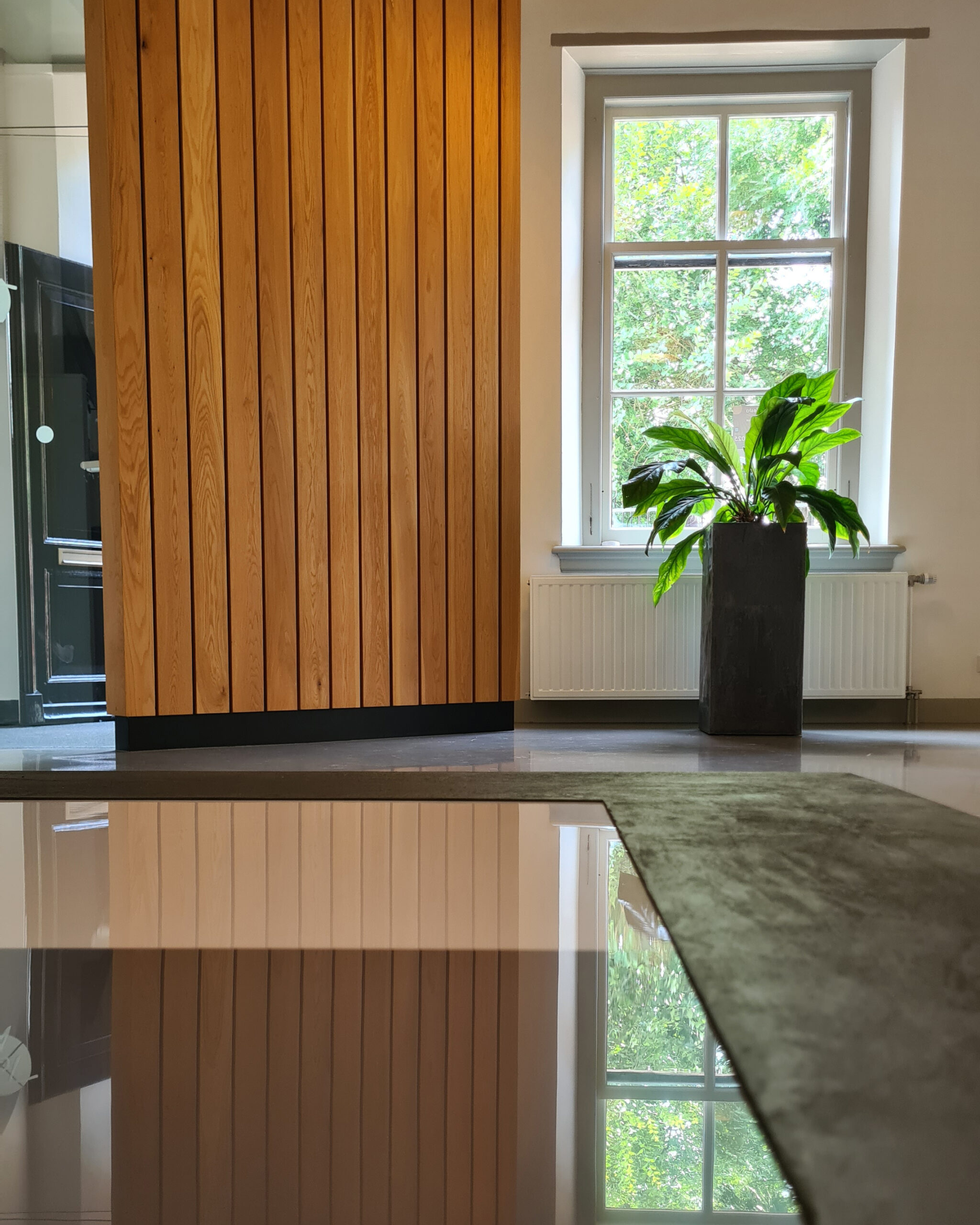
This series of artworks consists out of 64 uniquely colored panels. These become available for sale one after the other, each panel costing twice as much as the previous. Together they form a chessboard.
It obviously is inspired by the famous wheat and chessboard problem. According to Wikipedia (2021):
The wheat and chessboard problem is a mathematical problem expressed in textual form as:
If a chessboard were to have wheat placed upon each square such that one grain were placed on the first square, two on the second, four on the third, and so on, how many grains of wheat would be on the chessboard at the finish?
The problem may be solved using simple addition. The total number of grains equals about 2,000 times the annual world production – much more than most expect.

Last square sold: #10 for 512 grams of gold (~€55,000 – Oct. ’25)
Value creating art
The desire of creating a real life version of the wheat and chessboard problem has been in my head for over a decade. It was Maurizio Cattelan’s ‘Comedian’ that made me realize that art can be the catalyst between this fascinating fable and reality.
Cattelan’s banana opened up my eyes. Nobody in his right mind would duct tape a banana on his wall, but this one got sold at an artfair for $120.000. Twice! The torrent of attention that followed after the sale was not because of the awesome banana, but because of the unimaginable amount of money that was paid for it. Value, creating art instead of value-creating art.

Ultimate example
The Gold and Chessboard Problem embodies the ultimate example of value creating art. The first squares are very affordable. Rightly so, because without the full story, bare gray squares aren’t even worth the production costs.
But when sales prices exceed production costs, somehow value has been added. This is coming from storytelling and scarcity. The larger the value of the artwork, the better the story and vice versa. At some point in time the story and the panels get considered art. Undeniably created by value.

Good to know
This starts as a digital conceptual artwork. However, it is my goal to create a physical version of this artwork and display it in a renowned museum of modern art. Collectors receive a 611 x 611 mm Chromalux square that comes straight out of that museum centerpiece. So the central artwork changes over time, losing some of its tiles as a result of the sales. The work is accompanied by a physical certificate of authenticity and an NFT (OpenSea).
Co-creation and shared profits
The concept of this serial artwork is fully developed in advance, but the current form of the artwork is influenced by the combined effort of its collectors. Every sale changes the appearance of the artwork and influences its fame. This makes its collectors co-creators.
[Edit 7 november 2025] The red highlighted paragraphs below are part of the original plan and are publicly communicated in the early stages of this artwork. From legal advice in November 2025 l learned that the construction I have in mind – where I share profits with my co-creators – is probably a piramid by the definition of the Dutch law (Wet op de kansspelen Art. 1a2).
I don’t want to operate illegally, so the intention of sharing profits is on hold indefinitely.I’m looking for solutions to keep the sharing-aspect of this artwork alive and operate within the law, but at this moment it’s most probable that I can only sell the artworks. I can’t share benefits with those who influence the composition. Unless I’m confident to do this legally. Fortunately, no squares are distributed yet, so no illegal transactions are made.
Dennis
As co-creators they share in the future profits. Once a square gets sold, the revenue gets split: the first half goes back to the latest buyer (covering the expenses of their initial investment), the other half of the revenue gets distributed between all co-creators. This means collectors can make a profit on their purchase without having to sell the item.
Share distribution: the owner of the first square gets one share, the owner of the second square two, the third three, etcetera. As the initiating artist and owner of all the unsold pieces I receive 1 share more than the latest collector. This makes that the collectors of the more expensive squares have a larger share (but the early adopters have the best ROI). An excel calculation sheet is available on request.

Pricing
Timelessness is an important subject of my art. Therefore my pricing is based on the gold standard. The first panel of the The Gold and Chessboard Problem costs 1 gram of gold, the second is 2 grams, the third 4 grams and so on.
With pricing based on the gold standard, future generations will be able to put the original sales price of these artworks into perspective with their modern day currency.
The currencies on this website are indicative. Actual prices of artworks are determined by the weight in gold shown and the trading rates on the day of the transaction. See https://goldprice.org/ for the current rates.
Customer research is mandatory for transactions exceeding €10,000 by Dutch national law (Wwft).
Blogs
Social media
Follow this project on social media (the first button is this artworks’ project page; the second button is Dennis’ personal Instagram)
